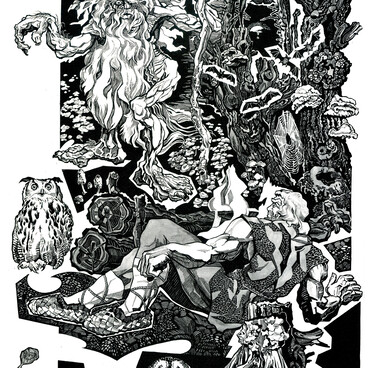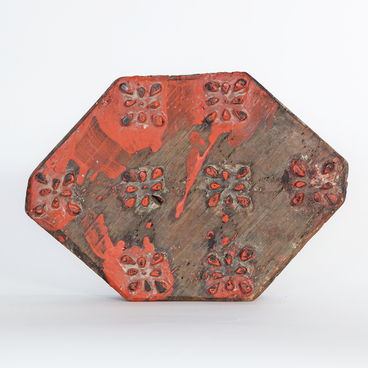The kushak belt is an essential element of the Komi-Permyak folk costume and a cherished art piece used as an adornment on everyday clothing and as a cult item. Traditional Komi-Permyak belts were popular in the late 19th — early 20th century, however, they first appeared as part of the Permyak national costume several centuries before that.
There are two main types of belts — narrow and wide ones. The wide belt is called a kushak or an opoyaska, the narrow one is a telnik, a pokromka or a poyasok. A kushak is a men’s accessory; it was woven to a width of 5–15 cm and a length of 2.5–3 meters. A kushak was to encircle the waist twice, and its long ends were to hang freely. When going on a trip or to work, at any time of the year, a man would belt his outer clothing tightly with a kushak. Work tools and hunting or travel gear would be tucked into or suspended from it. Narrow belts were worn by both men and women, especially young ones. Lads wore them over a shirt, and girls used them over a sarafan. The pokromka and telnik were 3 to 5 cm wide and 1.5 m long.
Both young girls and elderly women were engaged in weaving belts. Wide belts were always made from home or factory spun yarns exclusively on a weaving loom. The kushaks had several functions: practical, aesthetic and magical. They embodied spiritual life of people, their culture and traditions. Belts were given as gifts on holidays, used in ceremonies, and tied for good luck.
To decorate their belts, Permyak people created special ornamental patterns, full of symbolism. The most traditional design is a red pattern on a white background. It is based on a geometric pattern of straight lines, triangles, squares, and rhombuses. Each detail has its name in Komi-Permyak and Russian: sonan — comb, perna — cross, radz — strainer, katsha kok — magpie foot, tupös — pancake, dzugan ser — yarn waste, baran sur — ram horn, kör sur — deer horn. The collection of woven belts of the Komi-Permyak Museum, including kushaks, pokromkas and telniks, includes over 550 pieces. Experts continue to study them in order to better understand the spiritual and material life of the Perm people.
There are two main types of belts — narrow and wide ones. The wide belt is called a kushak or an opoyaska, the narrow one is a telnik, a pokromka or a poyasok. A kushak is a men’s accessory; it was woven to a width of 5–15 cm and a length of 2.5–3 meters. A kushak was to encircle the waist twice, and its long ends were to hang freely. When going on a trip or to work, at any time of the year, a man would belt his outer clothing tightly with a kushak. Work tools and hunting or travel gear would be tucked into or suspended from it. Narrow belts were worn by both men and women, especially young ones. Lads wore them over a shirt, and girls used them over a sarafan. The pokromka and telnik were 3 to 5 cm wide and 1.5 m long.
Both young girls and elderly women were engaged in weaving belts. Wide belts were always made from home or factory spun yarns exclusively on a weaving loom. The kushaks had several functions: practical, aesthetic and magical. They embodied spiritual life of people, their culture and traditions. Belts were given as gifts on holidays, used in ceremonies, and tied for good luck.
To decorate their belts, Permyak people created special ornamental patterns, full of symbolism. The most traditional design is a red pattern on a white background. It is based on a geometric pattern of straight lines, triangles, squares, and rhombuses. Each detail has its name in Komi-Permyak and Russian: sonan — comb, perna — cross, radz — strainer, katsha kok — magpie foot, tupös — pancake, dzugan ser — yarn waste, baran sur — ram horn, kör sur — deer horn. The collection of woven belts of the Komi-Permyak Museum, including kushaks, pokromkas and telniks, includes over 550 pieces. Experts continue to study them in order to better understand the spiritual and material life of the Perm people.

